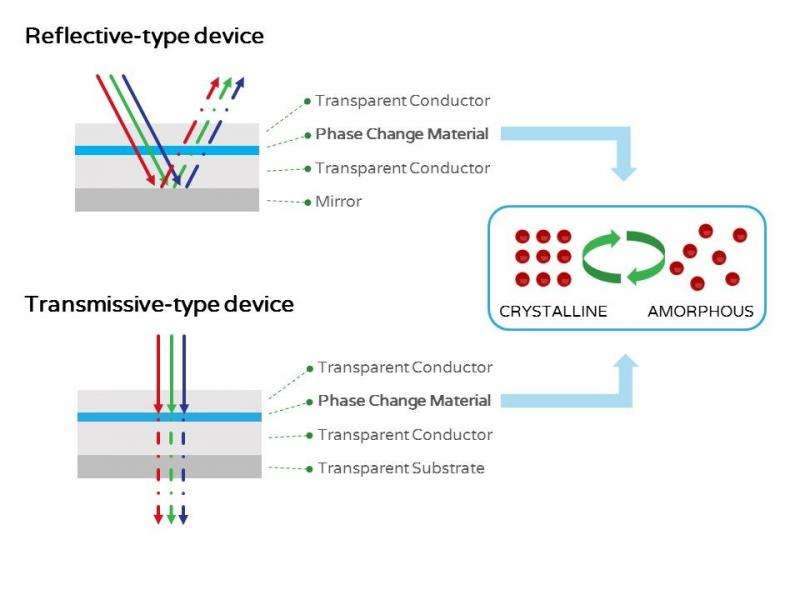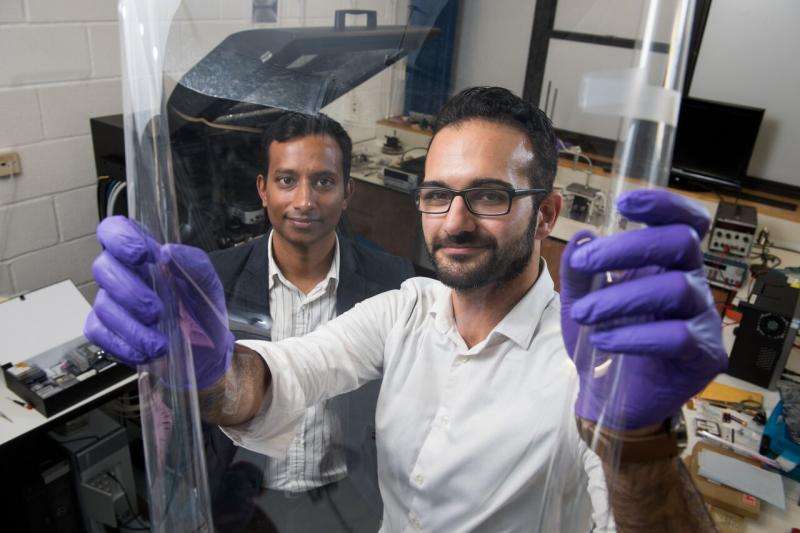November 25, 2015 weblog
Low-energy, high-res displays, glazing stem from Oxford research

UK-based Bodle Technologies calls its technology simple—and revolutionary. Their story: ultra-thin structures capable of manipulating light using means, whether electrical, optical or mechanical. "Filter, steer or dim light at a flick of a switch" and don't worry about power—what you do consumes very little to no power after switching.
They said this is an "optoelectronic framework–based platform" technology. Their site page has a chart to summarize their working principle.
Fundamentally, "The discovery by researchers at the University of Oxford that it is possible to use extremely thin, flexible, transparent layers of a new smart material to create low-energy high-resolution displays and glazing, is to be commercialized by spin-out company, Bodle Technologies." That is from a news release earlier this month by Begbroke Science Park.
The invention is by a team led by Professor Harish Bhaskaran and postdoctoral researcher Peiman Hosseini at the university's Department of Materials. Their work attracted attention following publication of a paper in Nature last year.
The Engineer discussed their findings, saying "by sandwiching a seven nanometer thick layer of a phase change material (GST) between two layers of a transparent electrode they could use a tiny current to 'draw' images within the sandwich stack."
"Phase change materials" are materials that can change from amorphous to crystalline state, added The Engineer.
"The layers of the GST sandwich are created using a sputtering technique where a target is bombarded with high energy particles so that atoms from the target are deposited onto another material as a thin film."

Engadget's Jon Fingas translated this company's work into relevance for smartphone owners: Good news.
"As you're likely all too aware, smartphone screens chew up a lot of power—that's why turning down your brightness frequently does more to save energy than closing an app. If Bodle Technologies has its way, though, your display will be a virtual non-issue," said Fingas. (The Daily Telegraph said, "The creation threatens to shake up the smartphone and wearable device market, because more than 90pc of the battery power in a mobile device is used to illuminate its display.")
Fingas described their technology revolving around sending electrical pulses to flexible, transparent layers. Should their technology eventually reach production initiatives, he said "it could go a long way toward solving the battery woes of modern mobile tech."

What about smartwatches, for example? "We can create an entire new market," said Hosseini in The Telegraph. "You have to charge smartwatches every night, which is slowing adoption. But if you had a smartwatch or smart glass that didn't need much power, you could recharge it just once a week."
Aside from mobile devices, Fingas said the discoverers were talking in terms of smart glazing applications, where windows would block the heat on a sunny day or filter out certain kinds of light.
Begbroke Science Park's release said that, with the smart glazing approach, "only certain wavelengths of light would be allowed into a building, giving instant control over both the heat and light being transmitted, and over the appearance of the glass."
More information: bodletechnologies.com/about-us … novative-technology/
© 2015 Tech Xplore



















